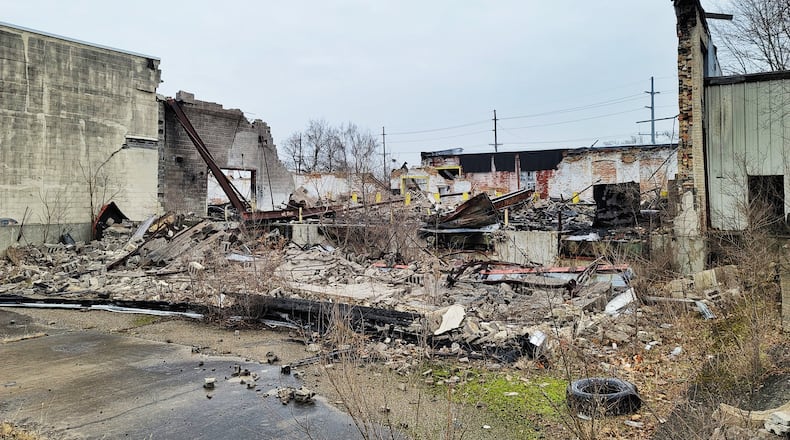The county commissioners have said they are willing to share some of their windfall, particularly to townships who have been excluded in previous funding estimates. Middletown City Manager Jim Palenick submitted a request for $6.6 million to help the city “transform and redevelop” the Ohio 4 corridor entrance to the city and also support the Oakland Neighborhood revitalization.
“We wanted to be sort of first in the queue to say as you start making your decisions and start thinking about priorities, don’t forget that Middletown was the first one to provide you with sort of detailed request,” Palenick told the Journal-News.
The request outlines work the commissioners’ contribution could pay for:
- $2.38 million to complete demolition, preparation and remediation of the 14-acre Paperboard site;
- $1.6 million to acquire, demolish and complete remediation of the 24-acre former AK Steel headquarters and research site;
- $1.57 million to acquire, demolish and complete remediation of the old 19-acre CETA site;
- $1 million for the Oakland neighborhood housing initiative.
“We want to acquire them, demolish, them remediate them and make them available again for new high quality, very light sort of commercial, industrial, good job producing type of stuff on 57 acres right there along the Route 4 corridor,” Palenick said of the commercial properties.
The city is also looking for funding to help pay for some demolition and “scatter site” new home building around the old Vale Middle School site. Palenick said the city is working on redeveloping the area with multi-family, high quality apartments and mixed use commercial as well as encouraging builders to back fill vacant housing within the neighborhoods. They need help getting the developers jumpstarted with modest subsidies because it will cost more to build a new home than a developer can hope to sell it for right now.
“We will recognize that difference and then basically provide enough subsidy that allows that builder who has that cost then sell it at that final sale price but still make a modest profit,” Palenick said.
“And do that for a number of these so we can create a new market, once a market is created and people start to recognize it can occur, then the open normal market can work on its own. Sometimes it takes government to get it started.”
Palenick said if the commissioners will entertain the projects, the city fully intends to provide some matching funds, but an amount is still to be determined.
The Butler County Mental Health and Addiction Recovery Services Board is also looking for a slice of the funding for an emergency mental health crisis stabilization center. Executive Director Scott Rasmus developed a rough estimate based on a similar center in Lima, and a 10-bed facility would cost about $1 million to create and another $1 million to operate. However he said about 60% of the operating costs are billed to Medicaid, and his board has identified other funds to keep the center in business.
He said he needs to retool those estimates for the commissioners because he would like to build a bigger facility, perhaps 15 to 20 beds, and because construction costs have skyrocketed during the pandemic. He is still working on a formal proposal.
Commissioner Cindy Carpenter has been meeting with jurisdictions and entities countywide asking for their ideas and or needs.
“It needs to be done in a highly focused way to projects that truly are going to make a long-term difference,” said Commissioner Cindy Carpenter. “I don’t want to see this $74 million chipped away at a little bit here and a little bit there.”
Commissioner Don Dixon said he would likely give priority to townships if they remain unfunded, but any projects must be self-sustaining.
“The first rule is don’t create a project that will only continue to require more money to keep it going,” Dixon said. “More tax levies, more taxpayers’ money, so you don’t have that ongoing drain on the general fund or other agencies having to go back out to the taxpayers for more money.”
About the Author

